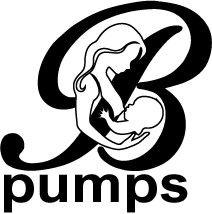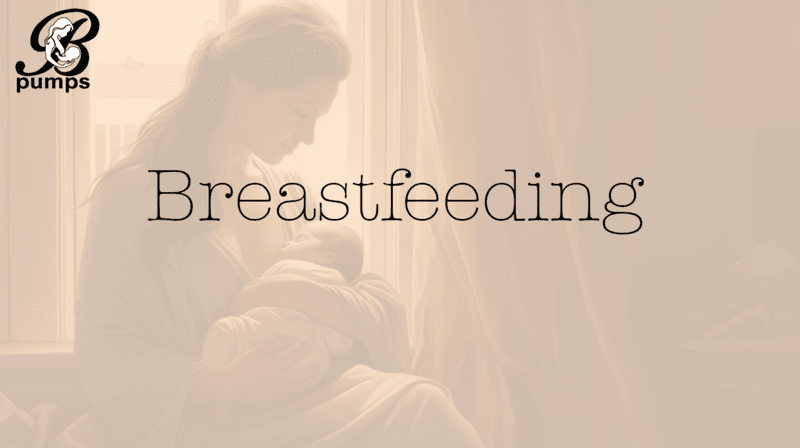Breastfeeding is a natural and important process for mothers and their babies. In this article, we will explore various aspects of breastfeeding, including what it is and the benefits it offers. We will also discuss what to eat during breastfeeding and whether alcohol consumption affects breastfeeding. Additionally, we will provide tips on mastering breastfeeding positions and suitable clothing for breastfeeding. Furthermore, we will delve into the use of breastfeeding pillows and pumps, as well as the possibility of breastfeeding while pregnant. We will also address how to manage breastfeeding pain and establish an ideal breastfeeding schedule. Moreover, we will touch upon extended breastfeeding and when to stop breastfeeding. Additionally, we will explore the benefits of joining breastfeeding classes and the availability of breastfeeding apps. Lastly, we will discuss how to bottle feed breast milk and whether breast reduction surgery affects breastfeeding. Finally, we will address the legality of public breastfeeding and the changes that occur in breasts after breastfeeding.
What is Breast Feeding?
Breastfeeding nourishes infants with essential nutrients and antibodies, promoting optimal growth and development. It strengthens the immune system and reduces the risk of health issues. Additionally, it facilitates bonding with the baby, aids in postpartum recovery, and lowers the risk of certain diseases for the mother. Healthcare professionals recommend breastfeeding as the best form of nutrition for babies up to six months, with continued breastfeeding alongside complementary foods up to two years or beyond.
What are the Benefits of Breast Feeding?
Breastfeeding benefits both the baby and the mother. It boosts the baby’s immune system, reducing the risk of infections and diseases, by providing essential nutrients and antibodies. Breast milk prevents digestive issues like constipation and promotes healthy weight gain, reducing the risk of obesity later in life. For the mother, breastfeeding aids in postpartum weight loss and lowers the risk of breast and ovarian cancer. It also fosters bonding and positively impacts the mother’s mental health.
What to Eat During Breast Feeding?
To maintain a healthy diet while breastfeeding, consume a variety of nutritious foods such as fruits, vegetables, whole grains, lean proteins, and healthy fats. Stay hydrated by drinking enough water and limit caffeine, alcohol, and certain medications. Some breastfeeding mothers may need to increase calorie intake to support milk production. Consult with a healthcare professional or registered dietitian for personalized guidance on dietary needs.
Does Alcohol Affect Breast Feeding?
Alcohol can affect breastfeeding as it enters breast milk and can be passed on to the baby. This can have negative effects on the baby’s development and overall health. Breastfeeding mothers should avoid or limit alcohol consumption. If a mother chooses to drink, it is advised to wait for the alcohol to metabolize before breastfeeding. Prioritizing the baby’s well-being, breastfeeding mothers should seek guidance from healthcare professionals.
How to Master Breast Feeding Positions?
Mastering breastfeeding positions involves finding a comfortable position for both you and your baby. Common positions include the cradle hold, cross-cradle hold, football hold, and side-lying position. Experiment with different positions to determine what works best for you and your baby. Before latching, ensure that your baby’s head and body are aligned and their mouth is wide open. Bring your baby to your breast, aiming their lower lip to the base of your nipple, while supporting your breast with your hand. Remember that practice and patience are essential for mastering breastfeeding positions.
What Clothes are Suitable for Breast Feeding?
Breastfeeding-friendly clothes should be comfortable, easy to access, and provide privacy. Ideal options include nursing tops or dresses with discreet openings or flaps, as they allow easy breast access while keeping the body covered. Wrap tops or button-down shirts are also convenient as they can be easily opened and closed. Choosing breathable and stretchy fabrics is important for comfort. Additionally, a nursing bra or a bra with nursing clips can enhance convenience during breastfeeding.
What are Breast Feeding Pillows?
Breastfeeding pillows, designed for support and comfort, come in U-shaped or crescent-shaped designs. Made of soft and cushioned materials, these pillows elevate the baby to the correct height and position for latching onto the breast. This reduces strain on the mother’s back, neck, and arms. Additionally, they provide a comfortable and secure position for the baby, promoting a relaxed and successful breastfeeding experience. Available in various sizes and designs, breastfeeding pillows accommodate different body types and breastfeeding positions.
When to Use a Breast Feeding Pump?
Mothers may use a breast feeding pump for various reasons. These include when the baby cannot latch properly, when the mother wants to increase milk supply, or when she needs to store milk for later use. Additionally, a breast feeding pump can help relieve engorgement and maintain milk production when direct breastfeeding is not possible. Ultimately, a breast feeding pump offers flexibility and convenience for breastfeeding mothers.
Can You Breast Feed While Pregnant?
Breastfeeding while pregnant is possible. Consult a healthcare professional to ensure safety for both mother and baby. Hormonal changes and increased sensitivity may cause discomfort. Proper nutrition and hydration are crucial. Breast milk supply may decrease and taste may change, affecting the nursing child’s willingness to continue.
How to Manage Breast Feeding Pain?
Breast feeding pain is a common issue for new mothers. It can be caused by factors like an improper latch, engorgement, or nipple sensitivity. To manage this pain, address the underlying cause. Alleviate discomfort by adjusting the baby’s position and ensuring a proper latch. Provide relief with warm compresses or cold packs. Soothe soreness by applying lanolin cream or expressing a small amount of milk and massaging it into the nipples. If the breast pain persists or becomes severe, seek guidance from a lactation consultant or healthcare provider.
What is an Ideal Breast Feeding Schedule?
A baby is ideally fed on demand, meaning they are fed whenever they show signs of hunger. In the first few weeks, this can be around 8-12 times a day. As the baby grows, the frequency of feedings may decrease, but the duration of each feeding session may increase. It is important to fully empty one breast before switching to the other. Breastfeeding should continue for at least the first six months, with the introduction of solid foods around six months while still continuing breastfeeding. The schedule may vary for each baby, so it is important to listen to their cues and adjust accordingly.
What is Extended Breast Feeding?
Extended breastfeeding, which refers to breastfeeding a child beyond the age of one year, is recommended by organizations like the World Health Organization and the American Academy of Pediatrics. The practice involves breastfeeding exclusively for the first six months and then continuing along with introducing solid foods until at least one year of age. It offers numerous benefits for both the child and the mother, including optimal nutrition, a boosted immune system, enhanced bonding, and reduced risk of certain diseases. The duration of extended breastfeeding varies based on the needs and preferences of the mother and child, making it a personal choice.
When to Stop Breast Feeding?
The decision to stop breastfeeding can vary for each mother and baby. Factors to consider include the baby’s age, the mother’s health, and the baby’s readiness for solid foods. Exclusive breastfeeding is recommended by the World Health Organization for the first six months, followed by continued breastfeeding alongside complementary foods for up to two years or beyond. Consult with a healthcare professional for guidance and support in making the decision to stop breastfeeding.
Why Join Breast Feeding Classes?
Breastfeeding classes provide valuable information and support for new mothers. They offer guidance on proper latch and positioning, tips for increasing milk supply, and managing common breastfeeding challenges. Joining these classes allows new mothers to gain confidence and knowledge, leading to a successful breastfeeding journey. Additionally, these classes create a supportive community where mothers can share experiences and learn from each other.
Are There Apps for Breast Feeding?
Apps for breast feeding are available. They track feeding times, duration, and which breast was used. They also provide reminders for feeding schedules and offer tips and advice. Some apps track diaper changes, sleep patterns, and growth milestones. These apps are useful tools for new mothers to monitor and manage their breastfeeding journey.
How to Bottle Feed Breast Milk?
“When bottle feeding breast milk, maintaining cleanliness and hygiene is important. Start by thoroughly washing your hands and sterilizing the bottle and nipple. Use freshly expressed or properly stored breast milk. To warm the milk, place the bottle in warm water, avoiding the microwave. Test the temperature on your wrist before feeding.
Hold the baby upright, supporting their head and neck. Stimulate their rooting reflex by gently touching the nipple to their lips. Tilt the bottle slightly to allow the milk to fill the nipple. Let the baby latch onto the nipple and suck at their own pace, avoiding force-feeding.
Take breaks during the feeding to burp the baby and release trapped air. If the baby finishes the bottle but still seems hungry, offer the remaining milk. However, if they show signs of being full, such as turning their head away or falling asleep, do not force them to finish.
In summary, bottle feeding breast milk requires cleanliness, proper warming, and allowing the baby to feed at their own pace.”
Does Breast Reduction Affect Breast Feeding?
Breast reduction surgery can affect breastfeeding. The procedure removes breast tissue, which can impact milk production and the ability to breastfeed. The extent of this impact varies from person to person. Some women can still breastfeed successfully after breast reduction, while others may have difficulties or be unable to breastfeed. Discuss your breastfeeding plans with your surgeon before undergoing the surgery to understand the potential impact and explore alternative options if needed.
Is Public Breast Feeding Legal?
Public breastfeeding is legal in many countries, including the United States. Women have the right to breastfeed their babies in public places because it is a natural and necessary act for infant nutrition. Laws protect breastfeeding mothers from discrimination and promote gender equality. These laws allow women to breastfeed their babies without fear of harassment or legal consequences. When breastfeeding in public, it is important to consider cultural norms and sensitivities to promote understanding and respect.
What are Post-Breast Feeding Changes in Breasts?
Post-breastfeeding changes in breasts occur in a woman’s breasts after she stops breastfeeding. These changes include a decrease in breast size, sagging or drooping of the breasts, changes in nipple appearance, and a loss of firmness. The extent of these changes varies from woman to woman and may be influenced by factors such as genetics, age, and the duration of breastfeeding. These changes are a normal part of the post-breastfeeding process and do not indicate any health concerns.

